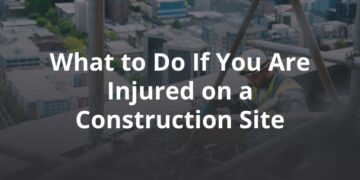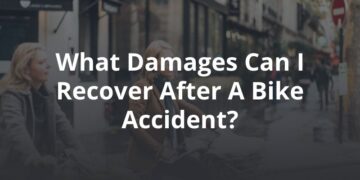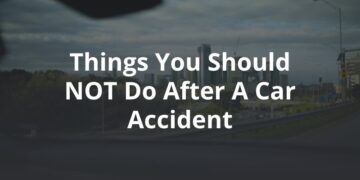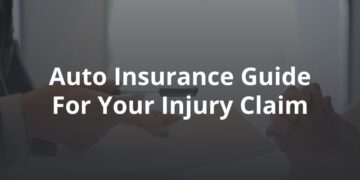Thrillseekers of all ages love to challenge themselves — and the laws of physics — by riding roller coasters, water slides, and other novelties at amusement parks. If this kind of fun seems like it’s timeless, that’s because roller coasters have been around in some form since the 15th century.
But while amusement park rides may be thrilling, they can also be dangerous. Injuries and fatalities at fairs, carnivals, theme parks, and large amusement parks often would have been preventable had the park or event host done its job of keeping visitors and riders safe. Victims of amusement park accidents have the right to consider filing a personal injury lawsuit against those responsible for their injuries, so it’s important to understand the legal options.
What Kinds of Accidents Are Common at Amusement Parks?
Unfortunately, there’s no limit to the kinds of injury you can sustain at an amusement park, but the most severe injuries are often related to the brain, spine, limbs, and of course, loss of life. While it may seem like amusement park accidents are more common than ever, this is not a new issue.
In 2000, the US Consumer Product Safety Commission (CPSC) published its first report on amusement park-related injuries and fatalities with extraordinary findings:
- 10,400 injuries were treated at emergency rooms in 1999
- Around four deaths per year occurred between 1987 and 1998
- 70 percent of injuries occurred at fixed-site parks, not mobile-site parks
- Factors contributing to injuries often included mechanical failure and operator behavior
Fixed-site parks, like Disney World, and mobile-site parks, such as traveling carnivals, are both included in reports by the CPSC, which continues to collect data on amusement park-related injuries. Between 2016 and 2020, over 700,000 people were injured in the United States in amusement-related activities, with 21,319 amusement park injuries reported in 2020 alone — that’s twice as many injuries as the sport of boxing.
A survey of 171 US and Canadian fixed-site amusement facilities conducted by the International Association of Amusement Parks and Attractions (IAAPA) looked at what kinds of injuries are happening at amusement parks and how severely people are being injured. Here’s what the report found for 2017, the most recent data available:
- Most injuries happened on adult and family rides. A full 51 percent of all injuries happened on rides intended for adults or all ages. These could be rides like The Wipeout or bumper cars.
- Serious injuries were not uncommon. Nearly 10 percent of all injuries were considered severe, with almost 1 percent of all rides resulting in a serious injury. For this report, “serious” means that injured people were immediately admitted to the hospital and stayed longer than 24 hours.
- All injuries reported required more than first aid. The other 90 percent of injuries reported in this survey all required medical treatment outside the scope of on-site first aid. Most were due to the motion of the ride itself, with the exception of children injured on children’s rides. In those cases, the number of injuries related to getting in and out of the ride was somewhat higher than injuries related to ride motion.
Here are some commonly reported amusement park injury types, ranging from serious to fatal:
- Brain aneurysms
- Back and spinal cord injuries
- Traumatic brain injury (TBI)
- Stroke and anoxia
- Burns
- Amputation
- Torn ligaments
- Broken bones and fractures
- Paralysis
- Fatal falls and drownings
- Emotional injuries, like PTSD
Surveys like this one are voluntary, however. Only about half of the parks asked to participate submitted results — even after numerous follow-up attempts by the data collection team. It might not be a stretch to wonder if the administrators of the more than 200 parks that did not respond wanted to keep their safety data to themselves.
Every three days in an average summer, a child is hospitalized for an injury sustained at an amusement park, water park, or even arcade. While safety inspections are expected to be standard practice, ride-related injuries are still occurring. According to a study published in 2013 by researchers at the Center for Research and Policy, over 4,000 children under age 17 per year seek treatment in the emergency room after being injured at an amusement park.
- The average patient age was around eight years old
- The head and neck were most commonly injured (28 percent of injuries)
- Falling in, on, off, or against the ride was the most frequent cause of injury (almost 32 percent of injuries)
With so many opportunities for injury, and so many different ways to be injured, how can you tell the difference between risk and responsibility? Unfortunately, you can’t always figure that out yourself, which is why speaking to a personal injury lawyer as soon as you are able after your accident is crucial. They may be able to help you determine if what happened to you was preventable.
What Are the Signs That an Amusement Park Accident Might Be the Park’s Fault?
Physical signs announcing risk are everywhere at amusement parks, which might cause many people to think that the risk of injury is entirely the riders’ responsibility. While it’s true that some riders may be at greater risk for injury when it comes to roller coasters and other rides, that doesn’t excuse the amusement park, ride manufacturer, and other parties from doing their part to keep riders safe.
Common causes of injuries at amusement parks include:
- Failure to maintain and inspect rides
- Broken or malfunctioning rides
- Slips and falls on slippery surfaces or tripping hazards
- Operators without adequate training or supervision
- Mechanical failures or defects
- Passenger misbehavior or misuse
Many rides require ride operators to let people embark in small groups or pairs, moving the ride along to load up the ride before it actually begins. Riders are jolted and bumped around when the operator jerks the controls too quickly or brakes too suddenly. This is just one example of how operating the ride in a negligent manner can be a sign that the amusement park does not put riders’ best interests first.
In some cases, amusement parks even try to blame death or injury on the riders themselves. Even when they have been found legally liable, amusement parks have not hesitated to blame the failure of a ride’s safety features on a rider’s weight or even on their disabilities. However, even if a park’s rules officially prohibit people with certain physical characteristics from riding, if the ride operator does not uphold the rule, the park may still be held legally responsible.
In other cases, equipment failure may have been entirely outside the control of the park itself, in which case the manufacturer of the equipment may be able to be held liable. In response to a devastating accident at the Miami-Dade County Fair, families of injured victims filed suit against multiple parties. This was over a decade after the whirling cylinder ride originally known as the Gravitron was banned and ordered to be modified before it could be reintroduced after an accident in Missouri.
Accidents at amusement parks are not an inevitable part of the experience. While injuries may not always be preventable, any business — especially one that engages in a risky business like an amusement park — has a stronger duty to keep its visitors safe than most people realize.
What Kind of Recovery Is Available in an Amusement Park Accident Case?
When injuries are the result of negligent or reckless behavior, victims can file a personal injury lawsuit to recover damages. In order to prove negligence, your lawyer will need to prove that:
- An unsafe condition caused your injuries
- The park knew about the potential of the unsafe condition to cause injury
- The park did not remove or prevent the safety hazard
- If not for the unsafe condition, you would not have been injured
The park does not need to explicitly know about the exact unsafe act that caused your injury. For example, if operator error caused your injury, the park does not need to have suspected that this operator would make a mistake. However, if the park did not take steps to ensure all their operators received proper training and supervision, then it is reasonable to say that they created an unsafe condition.
Amusement parks have a number of ways to fight being held liable for injury, like blaming passenger noncompliance, posting disclaimers, and asserting that riders know the risks. However, personal injury laws are complicated, and liability does not always have to be 100 percent. You may even think you are partially to blame for your injury, but laws around comparative negligence dictate that as long as you are less than 51 percent to blame, you still may have a case.
When you file a lawsuit, you are usually looking at recovering compensation for medical expenses, lost wages, and pain and suffering. Your lawyer will consider a number of factors when calculating the amount of damages to include in your suit:
- The extent of injuries, including any fatalities
- The length of time to recover, if ever, from injuries
- The cost of current and future medical expenses
- The amount of current and future lost earnings
- The pain and suffering caused by the accident
- The strength of evidence against the defendant(s)
- The factors contributing to the negligence, such as operator impairment
- The presence of any comparative fault factors
Personal injury lawsuits are complicated, and amusement parks often have powerful legal teams ready to scare off plaintiffs who are seeking to recover damages, so it is important to be educated about your options and have a team on your side who has the knowledge and resources to fight back.
How Can FVF Help?
Businesses and their insurance companies fight hard to get victims to settle for less than the value of their damages, and they’re not afraid to shift the blame. More than anything, FVF wants victims of amusement park accidents to be equipped with the knowledge they need to make decisions about what is best for them. If a lawsuit is what’s best for you, we have the legal team and the financial resources to take your case all the way to a jury to fight for your recovery and prevent others from being injured. Contact us for a free consultation about your case.





